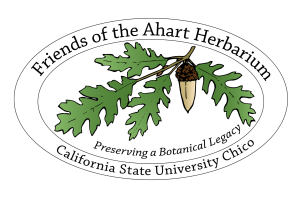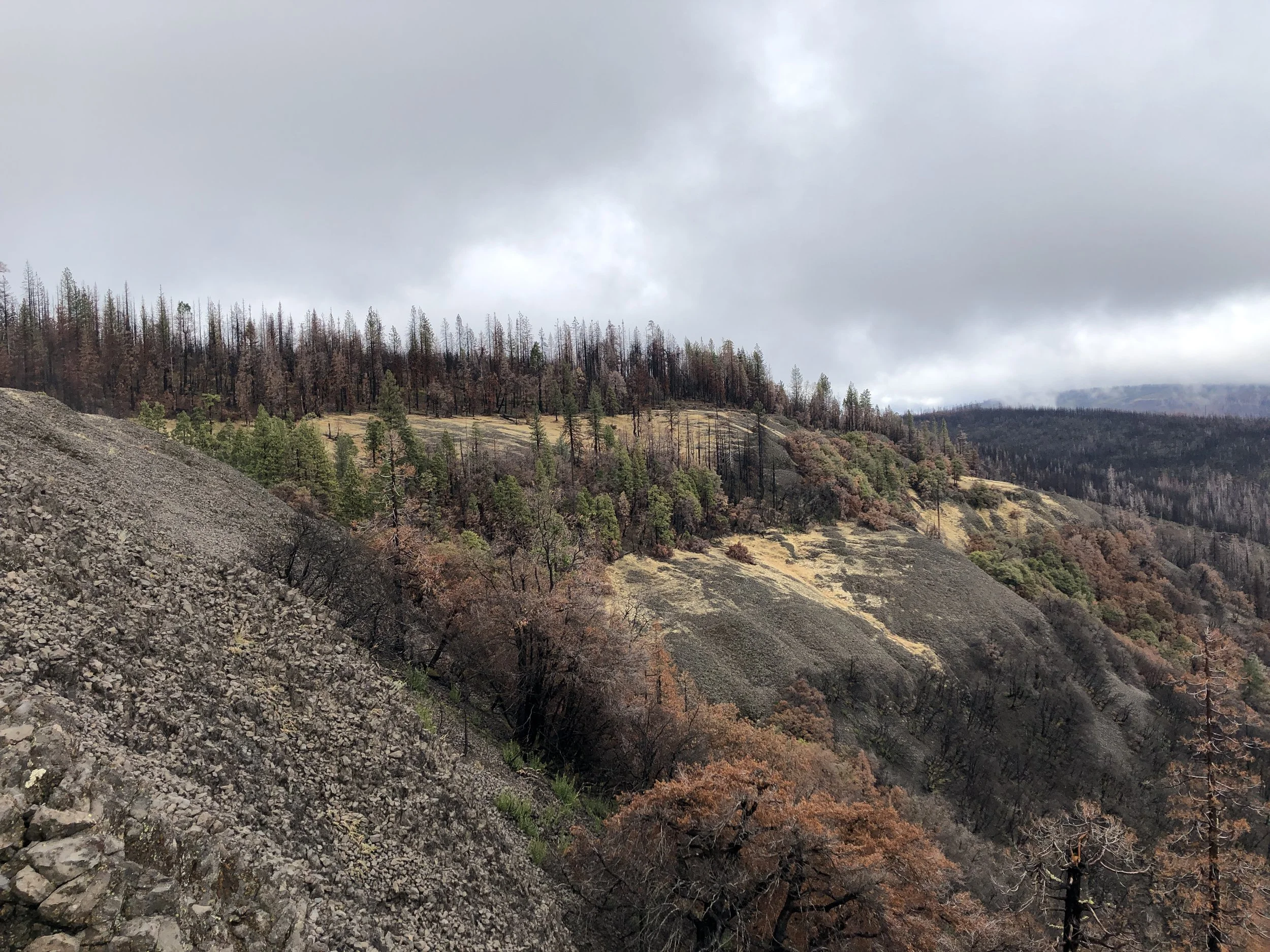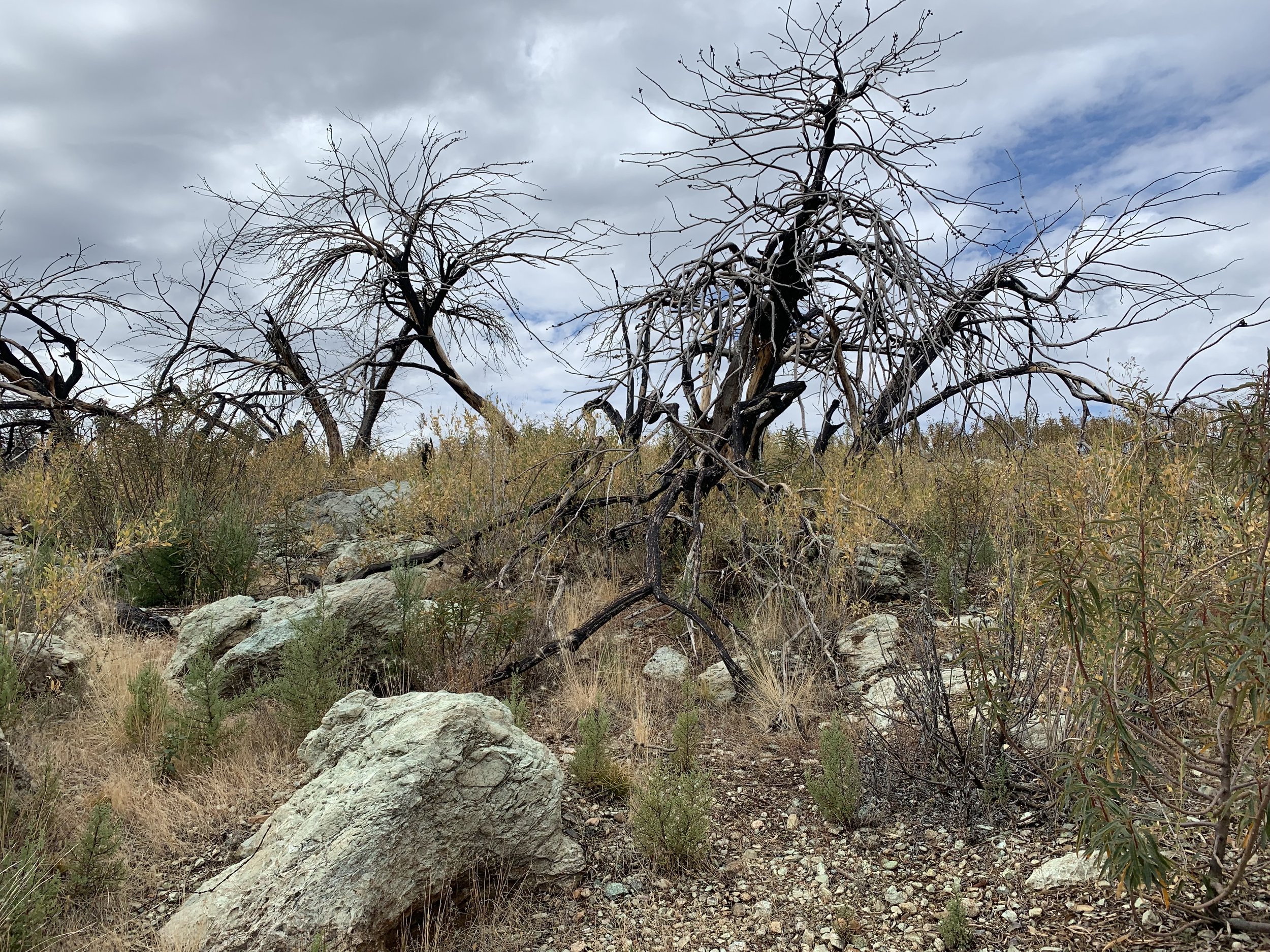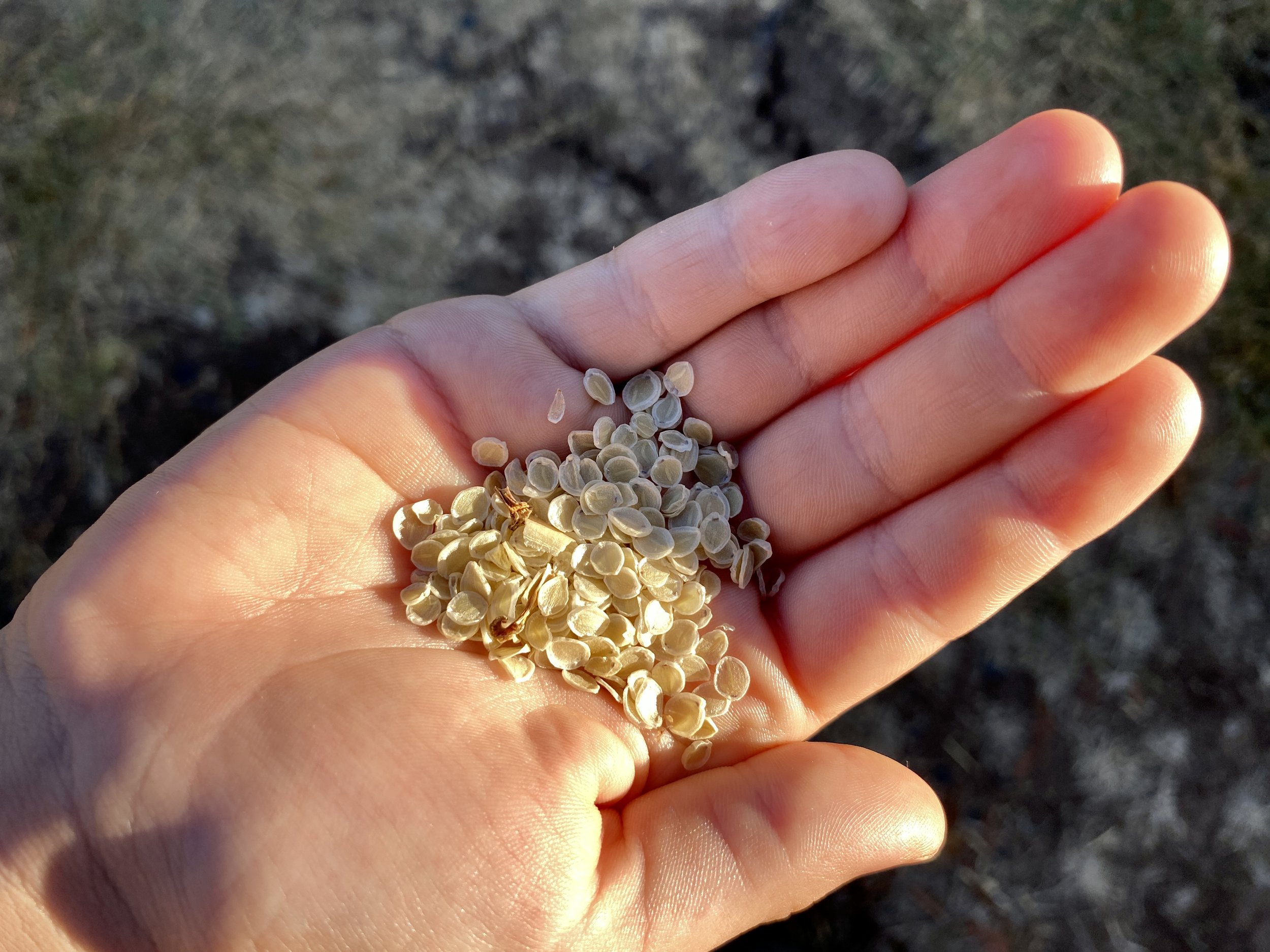All Things Botanically Related Presentation Series
Upcoming Presentations
Past Presentations
Ephemeral geophytes at high elevations are only available for study for five to six weeks after snowmelt and therefore are rarely investigated. From 2009 to 2021, Hal Mackey and Rob Schlising collected life history data on the closely related Dicentra uniflora and Dicentra pauciflora in the Cascade Range of northeastern Butte County, California, through field surveys and plantings. Join us to learn how these 16 years of data have provided insights into recovery times and persistence after major forest fires.
Presented by Tawny Bolinas, 2023 Jim Jokerst Field Botany Grant Award Winner.
View the presentation here.
Join renowned botanist Jon Keeley to learn about the fire regimes in herbaceous, shrubland and forest types throughout California and how different regimes have selected for different fire-adaptations.
View the presentation here.
Join Kyle Mason from the Big Chico Creek Ecological Reserve to hear about the history of fire in Butte County, how it's been used, and why. Kyle will follow-up with a discussion of how fire management might look in the future.
View the presentation here.
Join the authors of Firescaping Your Home: A Manual for Readiness in Wildfire Country to explore paradigms that get in the way of landscaping for defensible space or supporting native biodiversity. We will focus on psychological conventions in landscaping that often complicate the adoption of firesafe strategies, including foundation plantings, fences, wind patterns, and habitat fragmentation. We will wrap up with a discussion on support for biodiversity and fire insurance challenges.
View the presentation here.
The Siskiyou Crest has one of the highest concentrations of officially designated botanical areas on National Forest lands in the country. This presentation will take you on a photographic exploration of these unique Botanical Areas and highlight many of the rare and endemic species that grow in each area.
View the presentation here.
Join Forest Service Ecologist, Kyle Merriam to learn about the status and distribution of Baker cypress and Macnab cypress, two iconic, fire adapted species in northern California.
View the presentation here.
Join John Whittlesey, author of Plant Lovers Guide to Salvias to learn about the evolution and adaptation of salvias generally, their specific California habitats, and the pollinators with whom they co-evolved.
View the presentation here.
Herbarium specimens form an invaluable record of plant diversity and distribution. Join the Curator of the Ahart Herbarium, Lawrence Janeway, to hear about the importance of collecting plant specimens, how anyone can do it, and get some helpful hints on how you can ensure that what you collect is useful to the herbarium and researchers in general.
View the presentation here.
The 2024 Park Fire impacted a diverse range of woodland and forest habitats, including the Beaver Creek Pinery, a unique old-growth forest shaped by frequent fires. Join US Forest Service Research Ecologist Eric Knapp to learn about the factors that allowed the Pinery to withstand historical fires and how his research may inform forest management strategies under today’s fire climate.
View the presentation here.
Fire is an integral process in many California Ecosystems which have largely been shaped through Indigenous fire stewardship. In this presentation, Dr. Don Hankins will illustrate the interconnected nature of Indigenous knowledge to shape ecocultural relationships through fire stewardship to restore ecosystems and enhance climate and social resilience.
Here is some background on ecocultural stewardship in a paper that Dr. Hankins published in PNAS: Climate resilience through ecocultural stewardship
View the presentation here.
Join Naomi Fraga, Director of Conservation Programs at the California Botanic Garden, to learn about rare alkali wetland plants and her research supporting conservation of four at-risk species.
View the Presentation Here
Join Aaron Sims, Director of the Rare Plant Program for the California Native Plant Society (CNPS) to celebrate five decades of rare plant conservation and the people that make it possible.
View the presentation here.
During the first portion of this pictorial reminisce (All Things Botanical, May 16, 2024), John Dittes introduced us to Lowell, retired rancher and farmer, renowned Northern California botanist and plant collector, and namesake of the Herbarium at CSU Chico. We learned of Lowell’s early days, growing up on The Peter Ahart Ranch, and how he became the accomplished botanist we know today. We’ll continue from there, enjoying photos and stories of botanical projects, Northern California landscapes, and interesting people met along the way, from 2013 to present.
View the presentation here.
Dr. Frankie will touch on a variety of topics that illustrate his concern for pollinator conservation: The use of bee hotels (pros and cons), collecting pollinators, data basing of collections and value of museums, bee conservation and the need for citizen action. He will also discuss developing pollinator habitat gardens and native versus non-native plants in these gardens.
View the presentation here.
Nevada County and the cross-section of the Sierra Nevada it spans offer diverse habitats and a diverse set of plant species that inhabit them. For the first time, a true Flora of Nevada County is in the works. Join Shane Hanofee to hear about the process of making a flora, the botanical history of Nevada County, and some exciting discoveries made in the production of this work.
View the presentation here.
Join us as we reminisce on the botanical works and travels of renowned Northern California botanist and plant collector Lowell Ahart, in accompaniment of John and his life and business partner, Josephine. Seasoned botanists and those “new to botany” alike will enjoy this story and visual overview of the landscapes explored, botanical discoveries made, and interesting people met along the way.
View the presentation here.
Every year, thousands of visitors traverse North Table Mountain Ecological Reserve in Butte County, California. Most are drawn to the spectacular patterned displays of native wildflowers that peak for a few weeks during each spring. Which species are responsible for these displays? And how do the climate, geology, and hydrology of the Table Mountain mesa combine to create these striking floral designs? Learn from our speaker, Samantha (Sam) Hillaire, who is a co-author of the popular field guide, “Wildflowers of Table Mountain, a Naturalist’s Guide.”
View the Presentation Here.
Join BLM biologist Steve Laymon and botanist Brooke Thompson to learn about the unique flora of Hog Lake and the exciting Rancho Briesgau riparian restoration project in Tehama County.
View the presentation here.
Andrea Craig will take you on a tour of the rugged, remote, and richly biodiverse landscape of the Lassen Foothills. This conservation story will focus on Dye Creek Preserve and is about getting to know an elusive volcanic landscape, with over a century of grazing and development, and the diversity that has persevered.
View the presentation here.
Through soil seedbank studies ‘lost’ vegetation may be rediscovered, past composition highlighted, resiliency potential established and future trajectory imagined. Join Chico State Masters student Kaylie DeLuca to hear about her research on the seedbank of a restored meadow in Lassen Volcanic National Park.
View the presentation here.
Bumble bees are among the most charismatic, noticeable (visible and audible!), as well as critically important pollinating insects. In this talk, John Whittlesey will share photos taken over the last 8 years of bumble bees while weaving a discussion of their life history along with anecdotes of “living with bumble bees,” ending the talk with plants to plant if you too would like to invite bumble bees to live in your garden.
View the presentation here.
Join botanist Rob Preston to learn about the geophyte life style. Rob will share some of the findings from his research on Brodiaea and Dipterostemon and provide an overview of geophytes in the California flora.
View the presentation here.
Join author and radio host Jennifer Jewell to explore how the power of gardens and gardeners can be viewed through a lens of seeds, and the general state of seeds in our gardened lives: how they grow, where they grow, who grows them, who sells and/or controls them, and their care up and down the seedsheds of our world.
View the presentation here.
Join Travis Columbus, Research Scientist at the California Botanic Garden, to learn about Eriogonum, one of the most diverse genera of California native plants. Travis will give an overview of California's wild buckwheats with a focus on the Oligogonum subgenus and including new findings from his research.
View the presentation here.
Join Shaine Hill, the Chico State Biological Sciences Greenhouse Manager, to learn about the unique plants in the greenhouse, some of the accomplishments over the past year, and exciting plans for the Conservancy’s future.
View the presentation here.
Learn about the beautiful—and sometimes confusing—Sedums in section Gormania. Barbara Wilson, coauthor of the revised taxonomic treatment of the species, will guide us through the recent research and remaining mysteries surrounding this unique group of succulents.
View the presentation here.
Join Chris McCarron from the Great Basin Institute to learn about the rich flora and exciting recent discoveries at the Whiskeytown National Recreation Area.
View the Presentation Here.
Carol Witham will help us to explore the short-lived, weird-looking, fascinating fauna that evolved millions of years ago, and dazzling swaths of tens of thousands of tiny flowers that change from week to week through a two- to- three month “season”.
View the presentation here.
Join restoration ecologist Pat Reynolds to learn about the steps that go into the design, implementation and maintenance of habitat gardens dominated by native herbaceous vegetation and include the incorporation of habitat features designed to maximize ecological values and habitat function.































